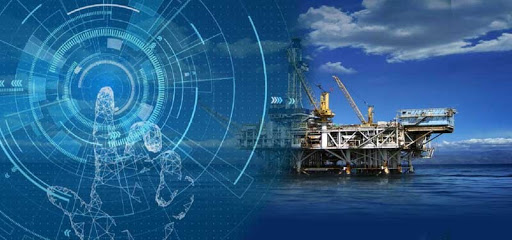
T&B Petroleum/Press Office

Nowadays, most of the new technological trends in industry are somehow related to AI - Artificial Intelligence, Internet of Things – IoT and Robotics. It is about one of them: Robotics, that I want to talk about today. As an experienced O&G professional, I've seen many technologies be born, flourish and become common place. However, in this case, something has caught my attention. Each of the three main new technologies I mentioned above, bring value when applied individually. However, their impact is greater when combined.
I truly believe we’re at the early stages of a technological revolution that has the potential to add value in many areas of the O&G industry by changing the way we work, enabling different approaches to carry out operations, managing safety, and the day-to-day challenges inherent to the O&G activities.
Robotic devices are poised to play a key role in our industry. In fact, it is already happening (or at least trial tests are ongoing) in some obvious areas where it makes complete sense to replace workers in life-threatening environments, such as in areas with constant high levels of H2S or remote unmanned offshore production rigs. It is not only safer but also more efficient and cost-effective.

And things get even more interesting when Robotics goes together with AI as it enables robotic devices to carry out more complex tasks, taking on a variety of roles ranging from optimizing resources to improving operational safety. In fact, they’ve already arrived in many areas providing added value through innovative solutions.
The number of scenarios where robotic devices can be applied are almost limitless, especially when you consider routine activities where the same sequence of tasks or actions (simple) are repeated. With the use of AI, these systematic tasks can be largely optimized and improved when data acquired from previously executed tasks is available for analysis. We are only at the beginning of the process, but the possibilities are clear. This process will soon prove itself disruptive in many areas of applications in the O&G industry.
One of the areas where the use of robotic devices can make a valuable contribution is in upstream data collection, especially for collecting missing well data which includes wellbore hardware condition, integrity, and isolation status. This data is critical to ensure integrity and safety by evaluating potential issues and to properly plan corrective well-intervention activities. Ultimately, this application, for robotic devices, stands as a key enabler to successfully planning and perhaps, soon, executing Plug and Abandonment (P&A) operations in O&G wells.
As P&A is inserted in the concept of Well Intervention, robotic devices could be used in a broader range of applications in the well environment, from simple runs to obtain downhole data to complex tasks like the operation of mechanical devices such as sliding sleeves or to set/unset plugs, to move from the tubing to the casing and vice-versa, to access laterals or open hole to perform a range of tasks, etc.. These scenarios can become a reality in future daily well operations providing the conditions for development are in place in the years to come.
Here, once again, the potential for applications is vast. As the technological advances in the right direction with the required amount of support from the industry’s shareholders, I foresee a bright future where the use of robotics in O&G applications becomes a day-to-day routine as happened in the past with many “new technologies” in the past, which are “standard use” across the industry today.
Obviously, it won’t happen in one day. It is a long road until we get there, of course. But the elements required are available. The technology is available, mature enough and continues to evolve (it only needs direction, in my humble opinion), demand is in place as the industry is always looking for ways to do more with less, in a safer manner and maximizing profits. The last element are the visionaries who promote these breakthroughs. Historically, the industry has taken advantage of technological evolution to reach the next level of operational excellence, even reinventing itself sometimes. Right now, the work of these visionaries is not widely visible but there are niches where the development of robotics for O&G is notable. Constant investments are required to nurture it until a scalable level is achieved. Then, the whole industry will benefit.
About the author: Sandro Maciel is a Wells Intervention Specialist in the Robotics area at ouronova. With a background in Industrial Instrumentation & Automation Technology, he has over 30 years of experience in the oil and gas industry, holding technical and managerial positions at SLB and Weatherford in various countries. He has been involved in onshore and offshore projects in the fields of construction, completion, and well intervention.
Contact us